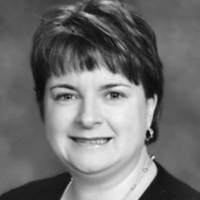Question
What is the difference between voice banking and message banking?
Answer
There is very much a clinical difference between the two options. The biggest difference between the two methods, is that voice banking is the process of creating a synthesized version of a user’s voice. The benefit of this method is that the user can use any text to speech communication program, and the voice would be a synthesized version of their premorbid voice. In contrast, message banking is simply digitized recordings of a person's speech. If you remember audio cassette recorders, this is basically the same thing. The patient records a message, and the intonation, prosody and verbiage that is used is not modifiable unless it is rerecord.
A similar concept to message banking is message banking by proxy. This is when an individual that has a voice sounding similar in nature to the patient's voice is utilized. This might be a good option for somebody who's unable to complete message banking due to the severity of their dysarthria. The patient may ask a family member of the same gender or a friend to help them out with that process.
Finally, there is legacy messages and story banking which is the idea of recording personal stories or sayings that are unique to that individual. It would include personal or intimate messages, such as, “I love you”, etc.
There are several options a person can use for voice banking and message banking. However, clients will need to understand that, regardless of the voice banking method that is used, it is not something they can accomplish in 1-2 hours. For example, the Model Talker is a voice banking program that requires the individual to record approximately 1,600 sentences to create their synthesized voice. It is thought to take about 4-6 hours over the course of 3-4 days to record the full inventory. It is definitely a time commitment.
It is important to encourage clients to do some message banking even if they have a primary interest in voice banking. The synthesized voices are decent in terms of quality and similarity to their typical voice, however it is not going to sound exactly like their own voice. The only way to ensure that any personal messages sound like their own voice is to message bank them.
Kim Winter is a Speech-Language Pathologist at Hospital for Special Care in New Britain, CT. She has 20 years of experience, working exclusively with adults in the medical setting. Kim provides services in the Outpatient Department, as well as the Neuromuscular and Movement Disorders Clinics, providing interventions to individuals with motor neuron diseases, muscular dystrophies and Parkinsonian disorders.

